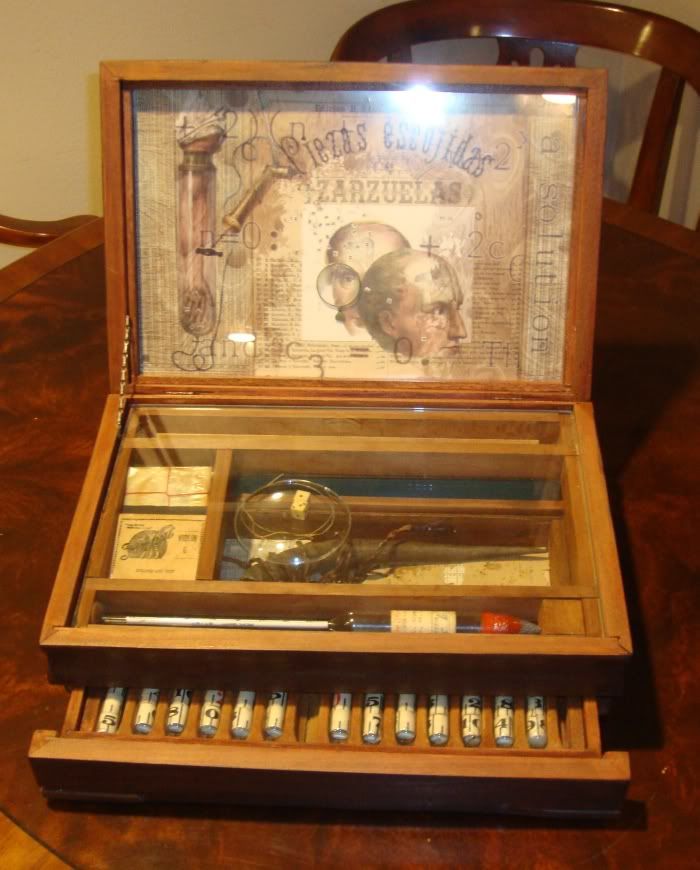
William Powhida, Why You Should Buy Art, archival ink print, edition of 500, 14" x 11", 2010
The concept behind 20x200 is to create artworks that are cheap enough for non-wealthy collectors to buy. The add two pieces every week (one photographic, one not). The prices range from $20 to $200. I recently bought two more pieces from 20x200.

Chad Hagen, Nonsensical Infographic No. 3, archival in print, 10" x 8", 2010

Chad Hagen, Nonsensical Infographic No. 4, archival in print, 10" x 8", 2010
I got these because not only are they beautiful to look at, they also deal with one of my favorite subjects--the visual representation of data. Of course, these are ironic because they are visual representations of no data. But let this be a warning. I intend in the near future to write something about data, statistics, and data visualization as art.
Chad Hagen is a designer, the profession that has been most deeply involved with data visualization.
One thing I don't like about the 20x200 pieces is that they aren't signed on the artwork. I was taught that when you do editions, you should sign and number them, usually in pencil, on the front underneath the image. But 20x200 has the artists sign little slips of paper that come with the prints.

My problem with these is that it separates the signature--which is the thing that authenticates the work--from the physical piece. It also places a burden on the collector. He or she needs to keep track of this little slip of paper from now on.
Anyway, these are my recent budget fine art buys. Small inexpensive limited editions, offered through an internet store, are a great way to get involved with collecting. It's definitely a lot less intimidating than the alternatives. Like going into a gallery and buying a piece. If one is not an experienced buyer from galleries (and I am not), one always wonders what the etiquette is. In almost any other retail establishment, you don't have to worry about this. But art is a luxury item, and buying it seems like it should involve certain rituals and niceties.
Here's what I bought recently at Hooks-Epstein. It's called Zarzuelas and it is by an artist named Ward Sanders.

Ward Sanders, Zarzuelas, assemblage, 11" x 16" x 5.5", 2010

Ward Sanders, Zarzuelas detail, assemblage, 11" x 16" x 5.5", 2010
Sanders' exhibit consisted mostly of wooden boxes with mysterious things in them. The obvious antecedent is Joseph Cornell.

Ward Sanders, Zarzuelas, assemblage, 11" x 16" x 5.5", 2010

Ward Sanders, Zarzuelas detail, assemblage, 11" x 16" x 5.5", 2010

Ward Sanders, Zarzuelas detail, assemblage, 11" x 16" x 5.5", 2010
I had, buying Zarzuelas, a slightly amusing experience. I asked a question about the piece--what was the liquid in the test tube. They shrugged their shoulders--"Eh, I dunno." But once I made my interest in buying clear, they quickly got the artist on the phone! (I'll leave the contents mysterious for you.)
One thing that distinguishes Sanders biographically is that he has no formal art education, as far as I know. He has a BA in biology and did some graduate level work (but I don't know if it was in art or not). These days, when so many artists are credentialed professional (an absurdity when you think about it), it is kind of a novelty to run across one who doesn't have an MFA. In any case, his lack of education hasn't hurt him none. His pieces in this show were beautiful, mysterious, full of hidden antique knowledge. I'm reading Winters Tale by Mark Helprin right now--Sander's assemblages remind me a little bit of Helprin's novel of a fantastic turn of the century New York.




Robert,
ReplyDeleteI really like following your blog and appreciate how forthcoming you are with your art (and sequential art) purchases. I too have the Powhida print and a couple of prints by Lauren DiCioccio from 20x200. I have to admit they were purchased without consideration for "collecting" however (and I'm not sure where my slips of paper are). While I understand a collector's desire to have a signature ON the work itself, that would become such a logistical hassle for 20x200 that it couldn't possibly function as it does.
Of course, the act of buying art from 20x200 is a safe and comfortable one, with all the drama of buying books from Amazon. By contrast, my wife and I just made our first purchase from a gallery in town, and participating in that face-to-face transaction was both exhilarating and nerve-racking. There are rituals involved, and I felt awkward and clumsy for most of the experience. But it was also very rewarding, and I look forward to eventually doing it again.
You probably have a healthier regard towards the 20x200 prints you buy than I do. I was a comic book collector as a kid, and the anality I learned early has likely stuck with me in this regard. But one point I'm making is that 20x200, like all low-cost collecting schemes, has its shortcomings. I plan to talk about some others in the future. I don't know that there is an ideal way to do low-cost, consumer-friendly collecting, although I would say 20x200 comes close.
ReplyDelete